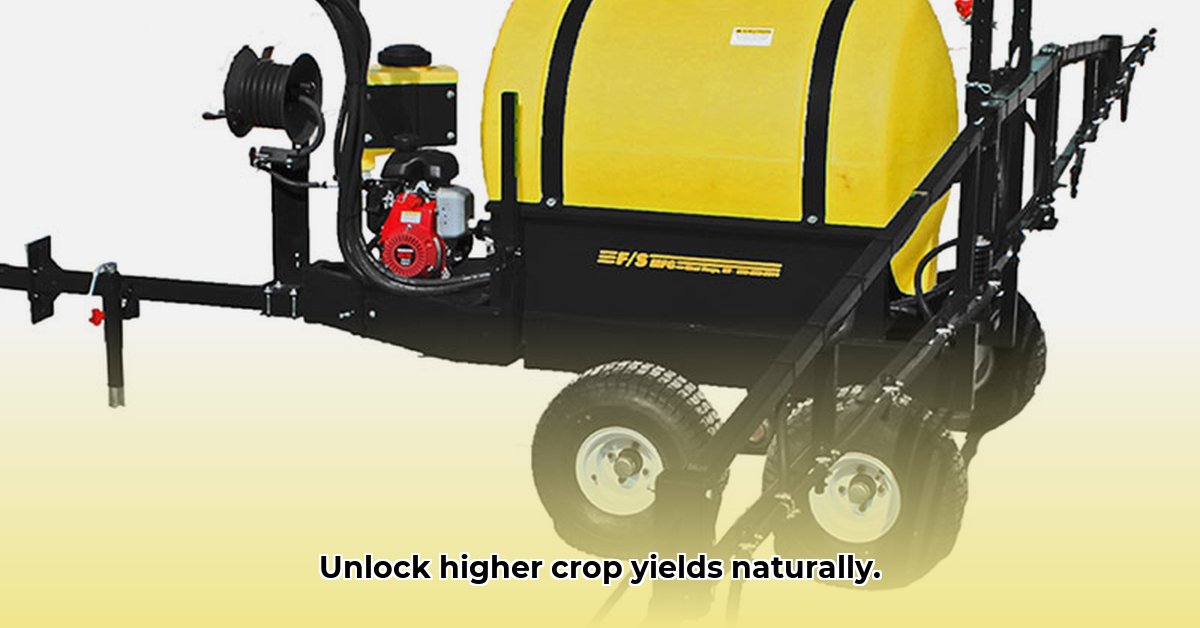
Decoding Soil pH: The Key to Nutrient Access
Healthy soil is the cornerstone of successful agriculture. Understanding your soil's pH (a measure of acidity or alkalinity) is crucial because it directly impacts nutrient availability for your crops. A soil pH that's too acidic or too alkaline can "lock up" essential nutrients, limiting plant growth and reducing yields. Think of it like trying to bake a cake with ingredients that won't mix – the result won't be ideal! Many soils, especially those that have been intensively farmed, tend towards acidity. This deprives plants of vital nutrients. For more information on lime pellets, check out Lime Pellets.
Many crops thrive within a specific pH range. For instance, most vegetable crops prefer a slightly acidic to neutral pH (6.0-7.0), while some legumes tolerate slightly alkaline conditions. How do we unlock the nutrient potential of our soil? Soil amendments.
Lime: Your Soil's pH Balancer
Dolomitic limestone, readily available at Lime Tractor Supply, acts as a soil amendment to raise soil pH. This "soil sweetening" process makes locked-up nutrients more accessible to plants. This is especially important for elements like phosphorus and molybdenum, which plants struggle to absorb in overly acidic conditions. Dolomitic limestone is a cost-effective way to address soil acidity and improve nutrient availability. But how do we effectively utilize it?
A Step-by-Step Guide to Lime Application
Effective lime application requires a strategic approach. Simply scattering it won't guarantee optimal results. Here's a step-by-step guide:
1. Conduct a Soil Test: This is the most crucial first step. A soil test, easily obtained from local agricultural extension offices or Lime Tractor Supply, determines the precise pH of your soil. This test will also identify deficiencies of other essential nutrients. Without this baseline data, your lime application may be ineffective or even harmful. "Knowing your soil is half the battle," says Dr. Emily Carter, Soil Scientist at the University of California, Davis.
2. Determine the Correct Lime Dosage: Your soil test report provides the recommended lime application rate (typically expressed in tons per acre). Adhering to this recommendation is vital. Applying too little lime won't provide sufficient pH correction, while over-application can create imbalances.
3. Even Application is Key: Apply the lime evenly across your field, using a spreader for larger areas, or manually for smaller plots. Uneven distribution leads to inconsistent pH levels and hinders the effectiveness of the amendment. "Uniformity is key for consistent yield improvement," states John Miller, a farmer from Iowa with over 30 years of experience.
4. Incorporate the Lime: After spreading, incorporate the lime into the soil. This can be achieved through tillage or by letting natural processes integrate it over time. The goal is to ensure complete contact of the lime with soil particles across the entirety of the root zone.
5. Monitor and Adjust: After lime application, retest your soil after several months or a growing season. This will assess the impact of the application, enabling you to make further modifications if necessary. Soil pH is dynamic and can shift over time. Continuous monitoring is essential for long-term soil health management.
Bromegrass: Enhancing Soil Health Further
Bromegrass, also frequently available at Lime Tractor Supply, serves as a superior soil improvement agent beyond lime. This hardy perennial grass offers numerous benefits:
- Improved Soil Structure: Its extensive root system enhances soil aeration and reduces compaction, improving water infiltration and drainage.
- Increased Organic Matter: Decomposed bromegrass adds organic matter, stimulating beneficial microbial activity within the soil – essential for nutrient cycling.
- Erosion Control: Its strong root system prevents soil erosion, reducing nutrient loss and improving water retention.
- Weed Suppression: Dense bromegrass growth naturally suppresses weed competition for nutrients and resources.
Integrating bromegrass into your cropping system through rotation or intercropping further enhances soil health and boosts long-term productivity.
Biochar: A Sustainable Soil Amendment Option
Biochar, a charcoal-like material, offers another option, although at a greater cost. Biochar has gained popularity as a soil amendment due to its ability to improve soil structure, water retention, and nutrient availability. It also sequesters carbon, offering an advantage in broader climate change mitigation strategies. However, its higher cost often makes it a supplemental amendment rather than a primary one for many growers.
Synergistic Effects: Lime, Bromegrass, and Biochar
The most promising approach may involve a combination of soil amendments. For instance, a judicious combination of dolomitic limestone to correct pH, bromegrass to enhance soil structure and organic matter, and biochar (where economically feasible) for additional carbon sequestration, could yield the greatest gains. Experimentation and careful monitoring are key to optimizing your soil amendment strategy.
Remember, sustainable agriculture relies on responsible management. Regular soil testing, informed decision-making, and the judicious selection of soil amendments are key factors in enhancing both productivity and environmental sustainability. Lime Tractor Supply provides the resources; your knowledge and planning guide you towards success.